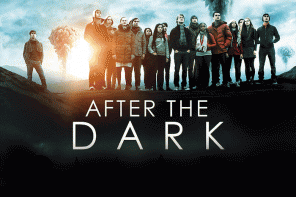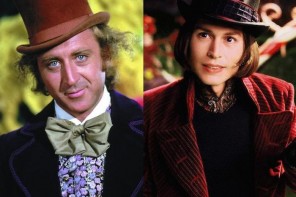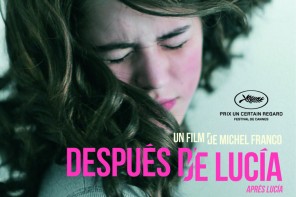Sunset Boulevard is arguably one of the most significant films ever released in American cinema. Billy Wilder’s magnum opus was released in 1950 in a conservative post-war climate. The dark and sinister tale about the American dream, or specifically, the Hollywood dream remains as relevant today as it did on its release. It is alleged that Wilder once wrote down “Silent picture star commits murder. When they arrest her she sees the newsreel cameras and thinks she is back in the movies” during the early 1940s. He subsequently kept returning to this idea until finally Sunset Boulevard was born. Mirroring on-screen and off-screen life, Sunset Boulevard is the story of Norma Desmond (Gloria Swanson), a has-been silent movie star eagerly awaiting her return to the screen, at the promise of young writer Joe Gillis (William Holden). What ensues is a tragic turn of events that brings Norma back into the spotlight, albeit at the cost of her sanity.
The success of the film lies in the irony of its depiction of Hollywood. Wilder paints a bleak portrait, representing the harsh nature of the film industry in which dreams are cut short and rejection is rife. Gloria Swanson echoes her own career in playing Norma Desmond, having once been a famed silent film star whose celebrity declined with the silent movies she starred in. Sunset Boulevard was Swanson’s big return to the screen, further reinforcing the gravity of the film.
Filmed in black and white and narrated in flashback in typical film noir style, the film is constantly plagued by an eerie sense of apprehension. The score acts as a magnificent tool in creating this suspense. This uncertainty and unease is fitting to the old mansion on Sunset Boulevard and Norma Desmond herself, thus establishing her as an odd and peculiar character that is not to be trusted. The same eeriness is encountered with Max, Norma’s butler, who is later found to be almost as crazy as Norma herself. Together they represent the darkness of Hollywood, the desperation and the hidden side once a star has faded into obscurity. On the other hand, Joe and Betty Schaefer, a budding writer, represent the hope in Hollywood: They are young, naïve and not quite sure how dangerous the industry can be. Joe falls prey to this ugly side of Hollywood, as is all too often the fate of many young hopefuls.
The film’s visual style also dances between the good and bad themes. The scenes at Norma’s mansion are shot in a dark, moody and typically film noir-ish style. The heavily shadowed lighting reinforces the shady goings-on of the three residents at the house: Norma, Joe and Max. However, in the world outside of the mansion, the style undeniably brightens, not only in lighting but also in mood. These scenes are little segments of optimism thrown in amongst a dark and inevitably tragic story. The juxtaposition not only depicts the good and bad in Hollywood, but also the two sides Joe is torn between – Norma depicting his demise, and Betty his hope. The film can be seen as a struggle between the dark and the light, good and bad, and this is prevalent not only through the characters, but also in the filming itself.
The climate in cinema history, surrounding the release of Sunset Boulevard, was a time of great change. Colour film was becoming a much more widely used form and the Hollywood studio system was also on the decline. Ironically, Sunset Boulevard tells the tale of an actress who lost her fame, with the advent of a new medium – sound – in the film industry. Gloria Swanson was in fact a star of the silent era, whose popularity waned amid the arrival of talkies. Her casting in the role truly was a comeback. It didn’t quite revive her career, but it did give her one last hurrah. Seen as one of the last great films made during the Golden Era of Hollywood, it is befitting that Sunset Boulevard echoes the story told within itself.
Few other films have made such an impact both culturally and historically on America’s legacy. Weaving themes of ambition, desperation and loneliness, the film is an unrequited version of the American dream. Perhaps that is why it is so poignant to audiences; it tells the story of the one that didn’t quite make it, the underdog that doesn’t win out in the end. The American dream is built on the ambition of the underdog, in the hope that they succeed. Hollywood is a mainstream incarnation of this ideal, making Sunset Boulevard a haunting account of the harsh reality of failure. Ironically the film still manages to glamourize this tragic story, while also cautioning against it.
Wilder’s statement with Sunset Boulevard was a strong one, due to the period in Hollywood in which it was released, and how bold the film was. It was considered quite a brave move by Wilder to create a film that so heavily criticises the industry that continued to serve him as a filmmaker. During filming the working title was A Can of Beans as Wilder and co-writer Charles Brackett were anxious about how it would be perceived by the rest of the film industry. The film was very successful, however, if not due to its ruthlessly honest portrayal of Hollywood. The message put forward in Sunset Boulevard is just as prevalent today, if not even more than it once was. Hollywood, at the moment, appears even more fickle than in its past, leaving no loyalty amongst itself. The turnover of actors and aspiring wannabes is undoubtedly higher today than long ago when studios had to invest time and money into creating stars.
Time has further cemented the film’s status as an icon of the Golden Era of Hollywood, particularly for a current audience. Stylistically, the film has transcended time and remains a classic example of film noir. Culturally, it has created it’s own mythology about Hollywood which other films now reference. Sunset Boulevard was a landmark film, not only in its sheer brilliance technically and aesthetically, but also in its strong social commentary.







